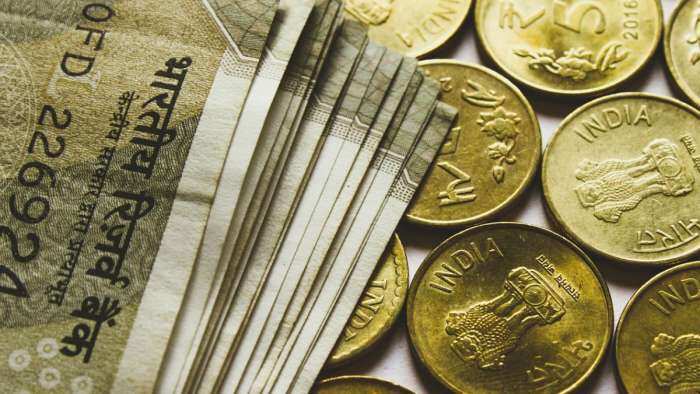Pandemic-driven loan recast to take GNPAs to 11.5 pc by March: Report
The pandemic-induced one-time loan restructuring will spike the system-wide gross non-performing assets (GNPAs) to 11-11.5 per cent by March, says a report

The pandemic-induced one-time loan restructuring will spike the system-wide gross non-performing assets (GNPAs) to 11-11.5 per cent by March, says a report.
Care Ratings expects 4-5 per cent of the existing loans to be stressed and opt for restructurings through the course of the year.
The system-wide GNPAs stood at 8.2 per cent in Q1 of FY21, down from 9.5 per cent in Q1 FY20, thanks to the recoveries and higher write-offs during the period.
The ratings agency expects fresh additions to the dud assets pile to primarily come from loans under SMA 1 and SMA 2 categories which were already under moratorium and not eligible for restructuring, lower rated corporates and personal loans not eligible for the restructuring scheme and the unsecured personal loans.
The new loan recast will ensure that the country continues to have the third highest bad loans among large economies after Greece and Russia. Smaller countries with higher ratios include Ukraine, Cyprus, Ghana and Kenya, the report said.
While Greece had GNPAs of 36.4 per cent in 2019, down from 45.6 per cent in 2017 and from 42 per cent in 2018, the same for Russia stood at 9.3 per cent, 10 per cent and 10.1 per cent, respectively.
The comparable numbers for India stood at 9.2 per cent in 2019, 10 per cent in 2017 and 9.5 per cent in 2018.
In absolute terms, India's GNPAs rose steadily from Rs 7.1 lakh crore in Q4 of FY17 to Rs 8.8 lakh crore in Q3 of FY18, and spiked to Rs 10.2 lakh crore in Q4 of FY18.
The highest incremental NPA addition of Rs 1.4 lakh crore was in Q4 FY18, after which the numbers began to moderate and came down to Rs 8.4 lakh crore in Q1 of FY21.
Of the total dud loans, state-run banks accounted for around 80 per cent of the pile till Q1 of FY20, after which there was substantial contraction in their GNPAs and it stood at Rs 6.4 lakh crore in Q1 of 2021, down from Rs 7.4 lakh crore in Q1 FY20.
Meanwhile, GNPAs of private sector lenders remained steady at Rs 2 lakh crore between September 2017 and September 2019.
System-wide asset quality has been improving due to recoveries (SBI Rs 4,056 crore, Canara Bank Rs 1,440 crore, PNB Rs 1,069 crore and Bank of India Rs 546 crore) and higher write-offs.
As of June 2020, state-run banks saw a 13.4 per cent contraction in their GNPAs, while that of the private lenders grew by 7.5 per cent.
Meanwhile, the pandemic-related provisions surged in the June 2020 quarter with banks providing higher additional provisions -- ICICI Bank Rs 5,550 crore, SBI Rs 1,836 crore, IndusInd Bank Rs 1,203 crore, Bank of Baroda Rs 996 crore, Axis Bank Rs733 crore and Kotak Mahindra Bank Rs 667 crore, along others, taking the total provisions to Rs 0.47 lakh crore.
See Zee Business Live TV Streaming Below:
Further, top 100 borrowers accounted for 17.5 per cent of gross advances, but only 12.6 per cent of GNPAs in March 2020.
Get Latest Business News, Stock Market Updates and Videos; Check your tax outgo through Income Tax Calculator and save money through our Personal Finance coverage. Check Business Breaking News Live on Zee Business Twitter and Facebook. Subscribe on YouTube.
RECOMMENDED STORIES

Budget 2025: Analysts recommend buying 6 largecap, midcap stocks for short term for 15-30 days; NTPC, Asian Paints on the list

Retirement Planning: How Rs 8,00,000 one-time investment can create Rs 2,40,00,000 retirement corpus? See calculations to know
08:50 AM IST









 India sees surge in deal activity at record $116 billion in 2024
India sees surge in deal activity at record $116 billion in 2024 Maharashtra will play key role in achieving India's $5 trillion economy goal: Minister Aditi Tatkare
Maharashtra will play key role in achieving India's $5 trillion economy goal: Minister Aditi Tatkare India's GDP growth to pick up in third quarter compared to first half of FY25: ICRA report
India's GDP growth to pick up in third quarter compared to first half of FY25: ICRA report GST collection grows 9% to Rs 1.87 lakh crore in October
GST collection grows 9% to Rs 1.87 lakh crore in October IMF says India's GDP growth to moderate to 7% in 2024 and 6.5% in 2025
IMF says India's GDP growth to moderate to 7% in 2024 and 6.5% in 2025